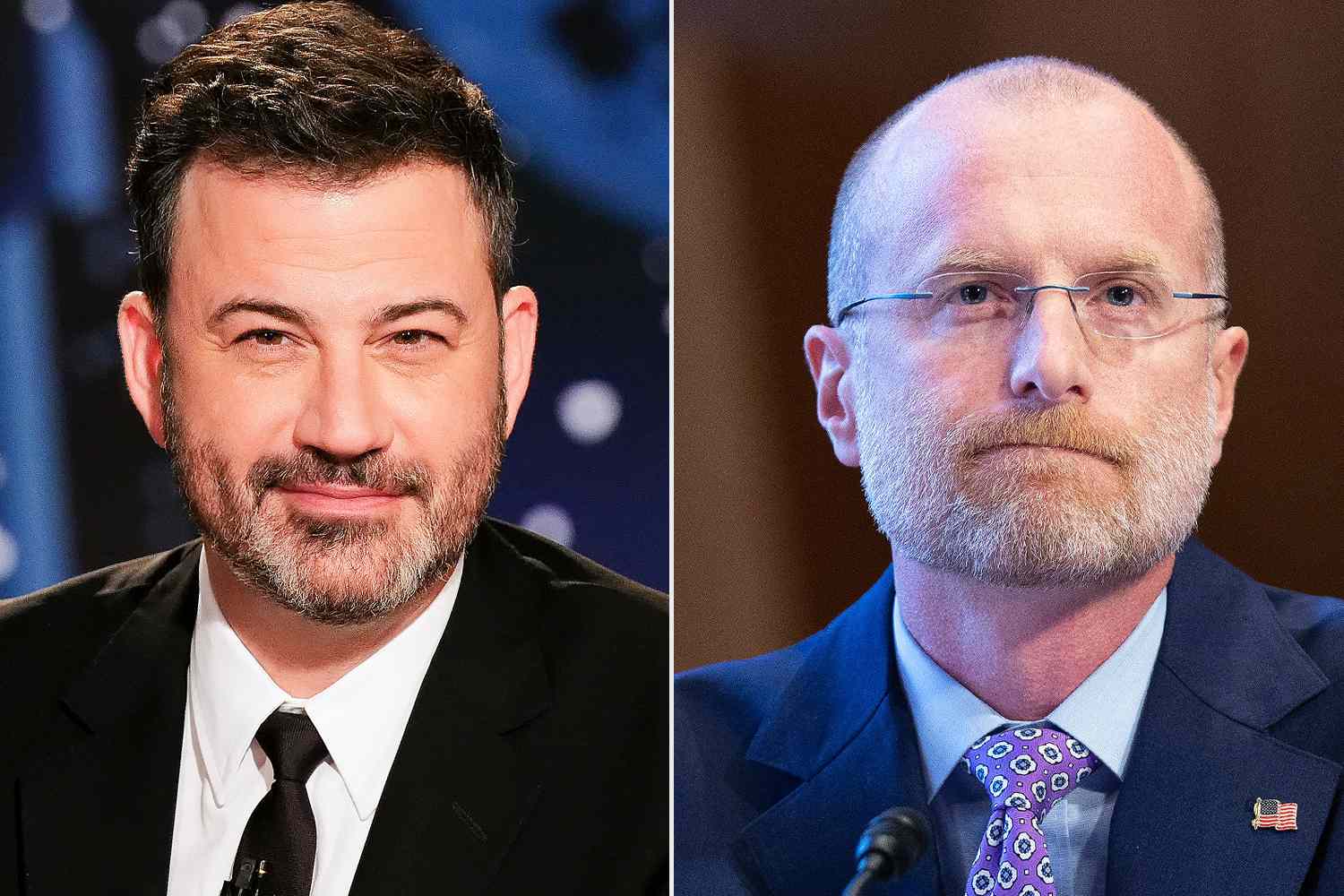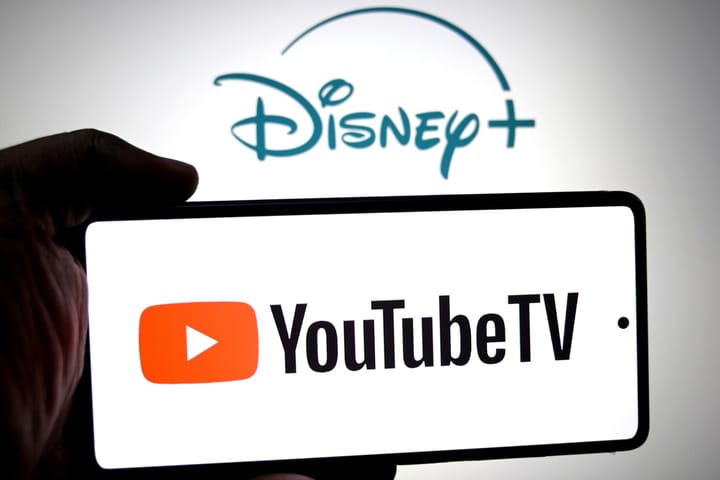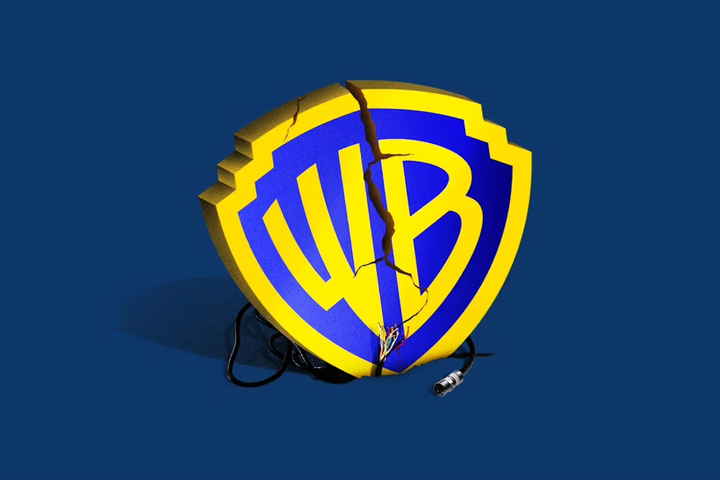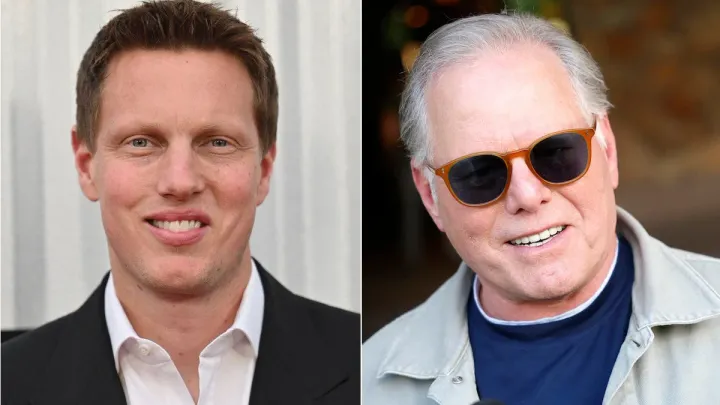THE LATE NIGHT SHAKE-UP Jimmy Kimmel’s Controversial Return to Late Night Television

In the ever-tumultuous world of late-night television, few controversies have rippled through the industry quite like the recent suspension and subsequent return of Jimmy Kimmel to his eponymous ABC show, “Jimmy Kimmel Live!” What began as controversial on-air comments has evolved into a full-blown media standoff, pitting network giants against their own affiliates in a rare public display of corporate discord that has left millions of viewers caught in the crossfire.
As of this morning, Nexstar Media Group, which operates 28 ABC-affiliated stations, confirmed they “will continue to preempt ‘Jimmy Kimmel Live!’” despite the Walt Disney Company’s decision to end Kimmel’s suspension and return the show to air today. This follows a similar announcement from Sinclair Broadcast Group, which oversees 38 ABC local stations, stating they too would replace Kimmel’s program with news content beginning tonight.
The significance of this affiliate revolt cannot be overstated: together, Nexstar and Sinclair represent approximately 25% of the U.S. television viewing audience, meaning that over one-quarter of American households that typically receive ABC programming will not have access to Kimmel’s show through their regular broadcast channels.
“We made a decision last week to preempt ‘Jimmy Kimmel Live!’ following what ABC referred to as Mr. Kimmel’s ‘ill-timed and insensitive’ comments at a critical time in our national discourse,” Nexstar declared in their official statement. “We stand by that decision pending assurance that all parties are committed to fostering an environment of respectful, constructive dialogue in the markets we serve.”
This standoff represents one of the most significant rifts between a major network and its affiliates in recent broadcasting history. To understand how we arrived at this unprecedented moment in television, we need to examine the complex series of events that unfolded over the past week.
THE CONTROVERSY: WHAT KIMMEL SAID
The spark that ignited this firestorm occurred during Kimmel’s Monday, September 15th broadcast, when the comedian made comments regarding the fatal shooting of right-wing commentator Charlie Kirk. While the exact nature of Kimmel’s remarks remains a subject of intense debate, ABC acknowledged they were “ill-timed and insensitive” given the national climate following Kirk’s death.
In the aftermath of the shooting, Kimmel did offer condolences to Kirk’s family on social media, writing, “Instead of the angry finger-pointing, can we just for one day agree that it is horrible and monstrous to shoot another human? On behalf of my family, we send love to the Kirks and to all the children, parents and innocents who fall victim to senseless gun violence.” However, this statement did little to quell the growing backlash.
The initial response came swiftly. By Wednesday, September 17th, Disney pulled Kimmel’s show from the air as both Nexstar and Sinclair independently announced they would not broadcast the program in their markets. This corporate rebellion prompted immediate speculation about whether ABC would stand by their embattled host or capitulate to pressure from affiliates and regulatory figures.
THE NETWORK RESPONSE: DISNEY’S DIFFICULT DECISION
After several days of what sources described as intense internal discussions among Disney’s top executives, the company announced on September 22nd that Kimmel would return to air the following day.
“Last Wednesday, we made the decision to suspend production on the show to avoid further inflaming a tense situation at an emotional moment for our country,” Disney stated. “It is a decision we made because we felt some of the comments were ill-timed and thus insensitive. We have spent the last days having thoughtful conversations with Jimmy, and after those conversations, we reached the decision to return the show on Tuesday.”
This decision was accompanied by an open letter from numerous Hollywood celebrities supporting Kimmel, including Jennifer Aniston, Ben Affleck, and Tom Hanks. The letter reportedly warned of a “dark moment for freedom of speech,” framing the controversy within larger debates about creative expression and censorship in American media.
Fellow late-night host Seth Meyers also publicly weighed in, stating it is “possible” to stand up to “bullying and censorship,” a comment widely interpreted as supporting Kimmel’s return to air.
However, Disney’s decision to reinstate Kimmel has not resolved the standoff with two of its largest affiliate groups. Both Nexstar and Sinclair have opted to maintain their boycott of the show, creating an unprecedented situation where a significant portion of ABC’s national footprint will not carry one of the network’s flagship late-night properties.
THE AFFILIATE STANCE: WHY NEXSTAR AND SINCLAIR ARE HOLDING FIRM
Understanding why these broadcast groups are maintaining their position requires examining both stated rationales and industry context. In their public statements, both companies have emphasized concerns about “respectful, constructive dialogue” and community values.
Nexstar explicitly noted in their statement that “‘Jimmy Kimmel Live!’ will be available nationwide on multiple Disney-owned streaming products, while our stations will focus on continuing to produce local news and other programming relevant to their respective markets.” This points to a larger tension between network programming decisions and local affiliate priorities.
However, industry observers have noted that the controversy coincides with significant regulatory matters affecting both companies. Nexstar recently announced plans to acquire Tegna, a rival broadcast company, for more than $6 billion - a deal that would further consolidate the local television landscape and put Nexstar in 80% of America’s TV-owning households. This acquisition will require final approval from the Federal Communications Commission.
Brendan Carr, who runs the FCC under President Donald Trump’s appointment, has publicly praised Nexstar for pressuring ABC to remove Kimmel, writing on social media platform X that “it is important for broadcasters to push back on Disney programming that they determine falls short of community values.” Carr had earlier suggested the FCC would investigate “news distortion” complaints against ABC stations unless Kimmel was removed from the air.
This regulatory context has led some media analysts to question whether the affiliate boycott stems primarily from content concerns or from strategic business calculations related to pending government approvals.
THE VIEWER IMPACT: WHAT THIS MEANS FOR THE AUDIENCE
For the average television viewer, the immediate consequence is straightforward: if you live in an area served by a Nexstar or Sinclair ABC affiliate, you will not be able to watch “Jimmy Kimmel Live!” through your regular broadcast channel. According to industry data, this affects approximately 25% of U.S. television households.
Viewers in affected markets do have alternatives. As Nexstar pointed out, the show “will be available nationwide on multiple Disney-owned streaming products,” meaning those with access to platforms like Hulu or Disney+ can still view new episodes. However, this creates a two-tier access system where some viewers must pay for streaming services to watch content that was previously available through free broadcast television.
Both Nexstar and Sinclair have indicated they will replace Kimmel’s timeslot with “news programming” and “other programming relevant to their respective markets,” though specific details about these replacement shows have not been widely publicized.
The duration of this programming blackout remains uncertain. Sinclair noted that “discussions with ABC are ongoing as we evaluate the show’s potential return,” suggesting the possibility of eventual resolution. Meanwhile, Nexstar’s statement that they stand by their decision “pending assurance that all parties are committed to fostering an environment of respectful, constructive dialogue” leaves the door open for potential reconciliation under certain conditions.
THE INDUSTRY IMPLICATIONS: A SHIFTING POWER DYNAMIC
Beyond the immediate controversy, this standoff between ABC and its affiliates highlights evolving power dynamics in the television industry. Historically, network-affiliate relationships operated under a relatively stable model: networks provided national programming and affiliates handled local distribution and advertising, with both parties maintaining clear spheres of influence.
This traditional arrangement has been disrupted by multiple factors, including the rise of streaming platforms, industry consolidation, and increasingly polarized content environments. Networks like ABC now operate their own direct-to-consumer platforms, potentially reducing their dependence on local affiliate distribution. Simultaneously, affiliate groups have consolidated, giving companies like Nexstar and Sinclair unprecedented leverage over programming decisions.
“What we’re seeing is a fundamental renegotiation of the network-affiliate relationship in real time,” explains media analyst Regina Carter. “When affiliate groups representing a quarter of your viewership can effectively veto a programming decision, it challenges longstanding assumptions about who controls broadcast television.”
This power shift occurs against the backdrop of broader industry transformation. Traditional television viewership continues to decline while streaming platforms gain market share. Both networks and affiliate groups are navigating this transition while attempting to preserve their respective business models and influence.
The Kimmel controversy also highlights tensions between entertainment content and local market sensibilities. Late-night comedy has long pushed boundaries and courted controversy, but in an era of fragmented media and polarized audiences, the tolerance for provocative content varies significantly across different regions and demographics.
THE CULTURAL CONTEXT: FREE SPEECH AND CONTENT REGULATION
Beyond business considerations, this controversy touches on fundamental questions about speech, humor, and the role of broadcast media in American society. The open letter reportedly signed by numerous Hollywood figures frames the issue as a “dark moment for freedom of speech,” suggesting broader concerns about content regulation and creative expression.
Broadcasting has historically operated under different regulatory frameworks than print or internet media. The FCC maintains authority over broadcast licenses and can enforce various content standards, though the scope of this authority has evolved significantly over decades of legal interpretation. The suggestion by FCC Chair Brendan Carr that the agency might investigate ABC stations over Kimmel’s comments raised eyebrows among First Amendment advocates, who questioned the appropriate boundaries of government involvement in broadcast content decisions.
“There’s a careful balance between the government’s legitimate interest in regulating the public airwaves and impermissible content-based restrictions on speech,” notes constitutional law professor Daniel Hoffman. “When regulatory officials appear to target specific viewpoints or personalities, it raises serious constitutional questions.”
This tension between content regulation and free expression is further complicated by changing media consumption patterns. As viewers increasingly access content through unregulated streaming platforms rather than broadcast channels, questions arise about the continued relevance and fairness of broadcast-specific content standards.
THE KIMMEL FACTOR: A LATE-NIGHT INSTITUTION UNDER FIRE
Lost somewhat in the corporate and regulatory dimensions of this story is Jimmy Kimmel himself - a figure who has evolved from comedy’s enfant terrible to a late-night institution over his two decades hosting “Jimmy Kimmel Live!”
Kimmel’s evolution as a cultural figure has been remarkable. He began his national career as co-host of Comedy Central’s deliberately provocative “The Man Show” before landing his ABC late-night spot in 2003. Over the subsequent years, he transformed from an irreverent comedy personality into a more politically engaged host, particularly following his emotional 2017 monologue about his son’s heart condition and healthcare access.
This progressive evolution has made Kimmel an increasingly polarizing figure in America’s fractured media landscape. To supporters, he represents conscience-driven comedy that doesn’t shy away from important issues; to critics, he exemplifies Hollywood’s perceived liberal bias and disconnection from middle America.
The current controversy appears to be exacerbating these divisions. Howard Stern, a longtime friend and supporter of Kimmel, announced he canceled his Disney+ subscription, stating, “I do not support what they’re doing.” Meanwhile, Sinclair has reportedly demanded that Kimmel apologize and provide financial compensation to Kirk’s family as conditions for lifting their boycott.
THE PATH FORWARD: POSSIBLE RESOLUTIONS AND OUTCOMES
As this controversy continues to unfold, several potential scenarios emerge:
- Negotiated Return: ABC and Kimmel could reach an accommodation with affiliate groups, potentially involving on-air clarifications or modified content standards that would allow the show to return to all markets.
- Permanent Blackout: Nexstar and Sinclair could maintain their boycott indefinitely, creating a situation where Kimmel’s show becomes primarily a streaming property in affected markets.
- Regulatory Intervention: The FCC could take a more active role in the dispute, though the scope of their authority to compel specific programming decisions remains legally ambiguous.
- Market Resolution: Viewer preferences and advertiser decisions could ultimately determine the outcome, with economic factors potentially outweighing content concerns.
Industry observers generally anticipate some form of negotiated resolution, noting that prolonged programming disputes typically harm all involved parties. The financial implications of permanently removing a flagship late-night program from a quarter of U.S. television households are significant for both ABC and Kimmel himself.
“These standoffs almost always end in compromise,” notes television industry consultant Marcus Rivera. “The question isn’t whether they’ll resolve it, but who concedes more ground in the process.”
THE BROADER LANDSCAPE: LATE-NIGHT TELEVISION IN TRANSITION
The Kimmel controversy occurs against the backdrop of broader transitions in late-night television. The format, once a stable institution in American broadcasting, has undergone significant disruption in recent years. The retirement of longtime hosts like David Letterman and Conan O’Brien, coupled with shifting viewer habits and the rise of social media, has transformed how Americans consume late-night comedy.
Traditional broadcast late-night shows now compete not only with cable alternatives but with YouTube clips, TikTok videos, and podcasts. The notion of viewers tuning in at 11:35 PM to watch topical comedy increasingly feels like a relic of a previous media era, particularly among younger demographics.
This changing landscape has prompted experimentation with format, content, and distribution. Some shows have embraced partisan political humor, while others have doubled down on celebrity interviews and viral-friendly segments. All have expanded their digital presence, recognizing that online clips often reach larger audiences than live broadcasts.
“The irony is that as these shows become more reliant on digital distribution, the traditional affiliate model becomes less critical to their success,” observes digital media analyst Sophia Chen. “A controversy like this might have been existential for a late-night host twenty years ago, but today’s multi-platform environment provides alternative pathways to viewers.”
Nevertheless, broadcast television remains the primary business model for shows like “Jimmy Kimmel Live!” The advertising revenue, production budgets, and cultural prominence still largely derive from traditional distribution channels. This creates a paradoxical situation where these programs simultaneously depend on and transcend their broadcast origins.
THE VIEWER PERSPECTIVE: ENTERTAINMENT IN A DIVIDED AMERICA
For the average television viewer, the Kimmel controversy exemplifies broader tensions in American entertainment. As media consumption becomes increasingly personalized and fragmented, shared cultural experiences become rarer. When controversial moments do break through to widespread attention, they often become proxies for larger cultural and political divisions.
Viewers in markets served by Nexstar and Sinclair affiliates now face a choice: seek out Kimmel’s show on streaming platforms or accept its absence from their local ABC station. This decision involves not just content preferences but potentially political and cultural alignments as well.
“Television used to be the great unifier,” reflects cultural historian Patricia Nelson. “Now, even decisions about which late-night comedy show to watch can reflect and reinforce our divided perspectives.”
This fragmentation extends beyond content to delivery mechanisms. As television viewing splinters between broadcast, cable, and multiple streaming services, the concept of a shared national media experience continues to erode. The Kimmel controversy accelerates this trend by creating geographically distinct viewing experiences based on affiliate ownership patterns.
THE FUTURE IMPLICATIONS: WHAT THIS MEANS GOING FORWARD
The standoff between ABC and its affiliates over “Jimmy Kimmel Live!” may eventually be resolved, but its implications will reverberate through the media industry for years to come. Several long-term consequences seem likely:
- Renegotiated Network-Affiliate Relationships: The unprecedented scale of this affiliate revolt will likely prompt networks to reconsider their relationships with station groups, potentially leading to new contractual frameworks that clarify content standards and dispute resolution mechanisms.
- Accelerated Streaming Transition: As broadcast distribution becomes less reliable for controversial content, networks may accelerate their pivot to streaming platforms where they maintain direct control over distribution.
- Content Self-Censorship: Late-night hosts and other broadcast personalities may become more cautious about potentially divisive content, aware that affiliate boycotts represent a new threat to their programs.
- Regulatory Scrutiny: The FCC’s role in this controversy may prompt broader examination of the agency’s content oversight authorities in the contemporary media landscape.
- Audience Fragmentation: Viewers may increasingly sort themselves not just by content preferences but by distribution channels, further fragmenting the national conversation.
Industry leaders are watching this situation closely, recognizing that its resolution will establish important precedents for future content disputes. The tension between creative expression, business relationships, regulatory oversight, and audience expectations remains unresolved, with the Kimmel controversy serving as a high-profile test case for navigating these competing priorities.
CONCLUSION: A DEFINING MOMENT FOR BROADCAST TELEVISION
As “Jimmy Kimmel Live!” returns to the air tonight - albeit on fewer stations than before - this controversy stands as a defining moment in the evolution of American broadcast television. What began as controversial comments by a late-night host has escalated into a multi-dimensional standoff involving network executives, affiliate owners, regulatory officials, Hollywood celebrities, and millions of viewers.
The outcome will influence not just Kimmel’s career or ABC’s programming decisions but the fundamental power dynamics of television distribution in America. In an era of media transformation, this controversy highlights the persistent tensions between national content creation and local content distribution, between creative expression and community standards, and between traditional broadcast models and emerging digital alternatives.
For viewers, the immediate impact depends largely on geography and viewing preferences. For the television industry, the stakes are considerably higher. The resolution of this dispute will help determine who controls what appears on broadcast television and under what conditions - questions that remain surprisingly unsettled despite nearly a century of broadcast history.
As television continues its evolution from a mass medium to an increasingly personalized experience, the Kimmel controversy serves as a potent reminder that even in a digital age, control of the public airwaves remains a source of significant cultural and economic power. How the industry navigates this power struggle will shape American media for years to come.
© 2025 Limitless Newsletter. All rights reserved. This comprehensive analysis was prepared by the staff of Limitless Newsletter, drawing on industry sources, public statements, and expert analysis. For subscription information, visit LimitlessNewsletter.com.



Comments ()